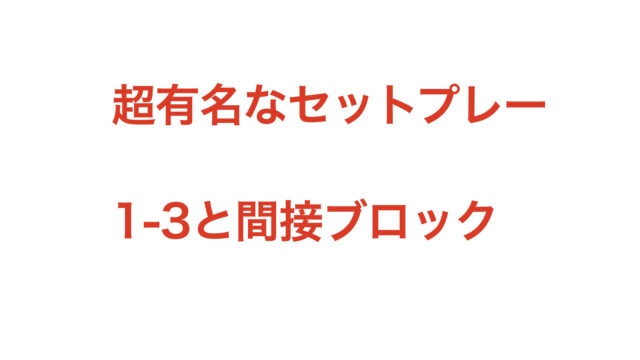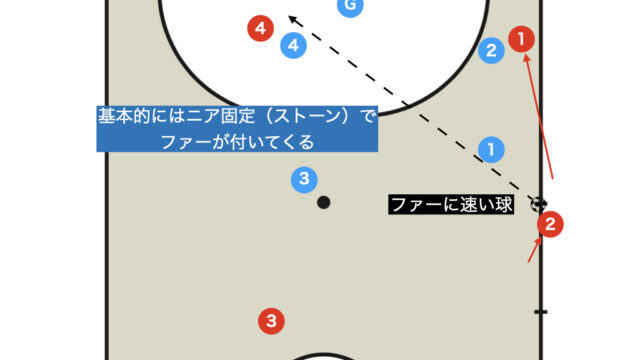Since direct goals are not permitted from an opponent half kick-in, the famous “Chondon” involves the kicker performing a chon and the shooter taking a “don” shot to quickly aim for the goal.
Such a Chondon, although simple, is an extremely powerful set-piece that remains difficult to stop even when anticipated.
In this article, all options of Chondon (broadly divided into four categories) are explained in detail, one by one.
Even without preparing a multitude of prearranged plays for opponent half kick-ins, mastering Chondon alone can yield a plethora of goals, so we hope you find this article insightful.
Theory of the Wall
- Keep a distance of 5m from the ball
- Position two players as near and far (if there is a low position with no chance of a goal or a high position without an angle, one may suffice)
- Once the play is live, one of the players attacks the ball (typically the player on the far side)
Whether the wall is formed from the near side or the far side depends on the team (most teams form it from the near side).
Basically, two walls can block a significant portion of the shooting lane towards the goal; however, since the course to the segundo cannot be completely closed off, many teams assign the near player to the wall and the far (segundo) to the Goleiro.
With this method of forming the wall, in order to completely block the near shooting lane, the near wall is fixed (stone) while the far wall attacks the ball.
When the Shooter is Close to the Ball
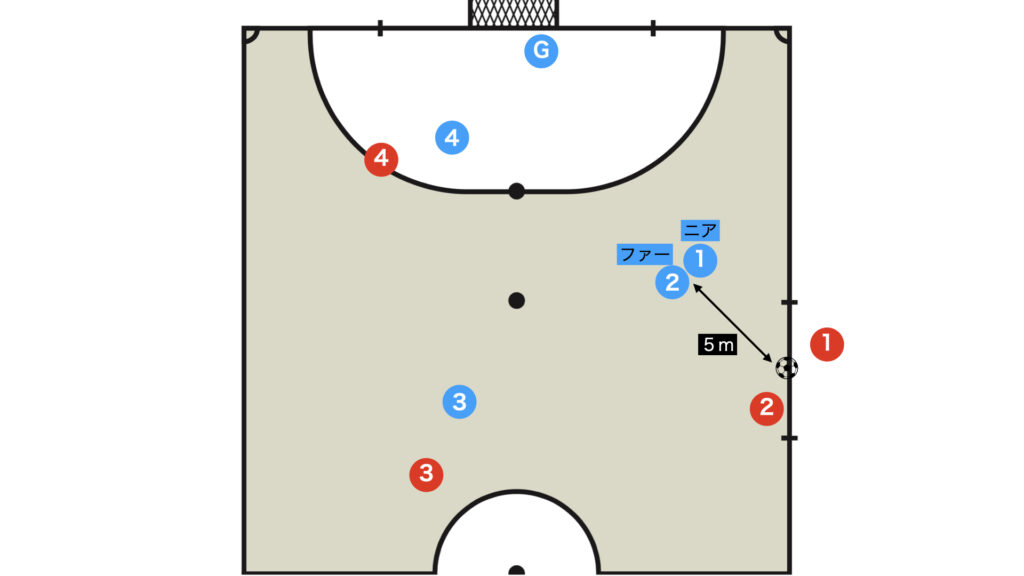
When the shooter is close to the ball, the near and far walls stick together to prevent any gaps.
If the positions of the walls shift at this time, the Goleiro from behind calls out to make adjustments.
When the Shooter is Away from the Ball
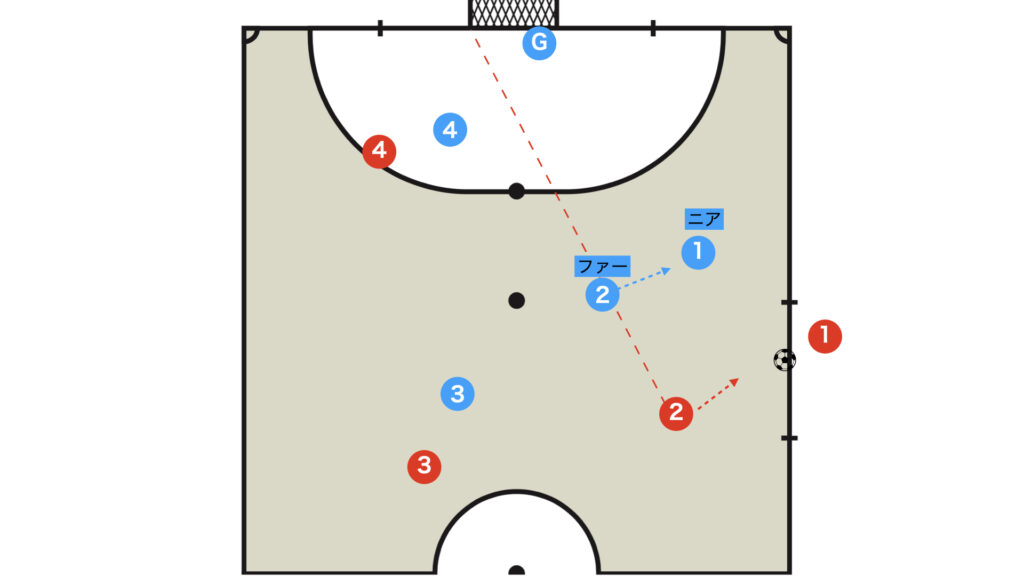
When the shooter is away from the ball (with a long run-up), the player on the far side stands on the line connecting the opponent and the far post, gradually adjusting his position along with the kicker’s movement (ensuring to merge with the near wall during the shot).
Initial Positioning and Opening
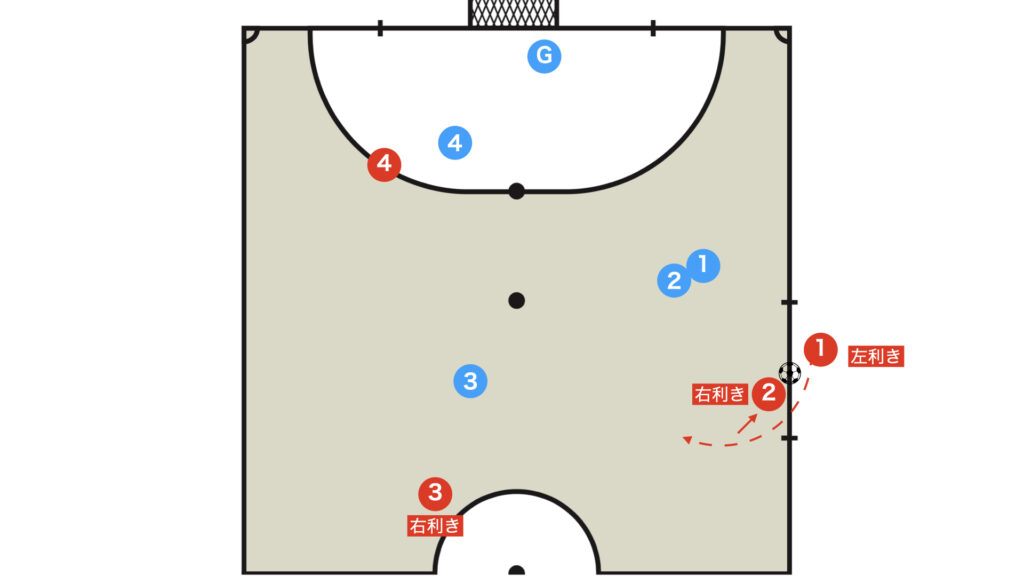
Players are positioned taking into account their dominant foot and individual abilities.
When the kicker performs a chon on the ball, immediately move behind the shooter.
(The purpose of moving behind the shooter is to fill the rebound position and to break the wall.)
The Finishing Triangle and Player Roles
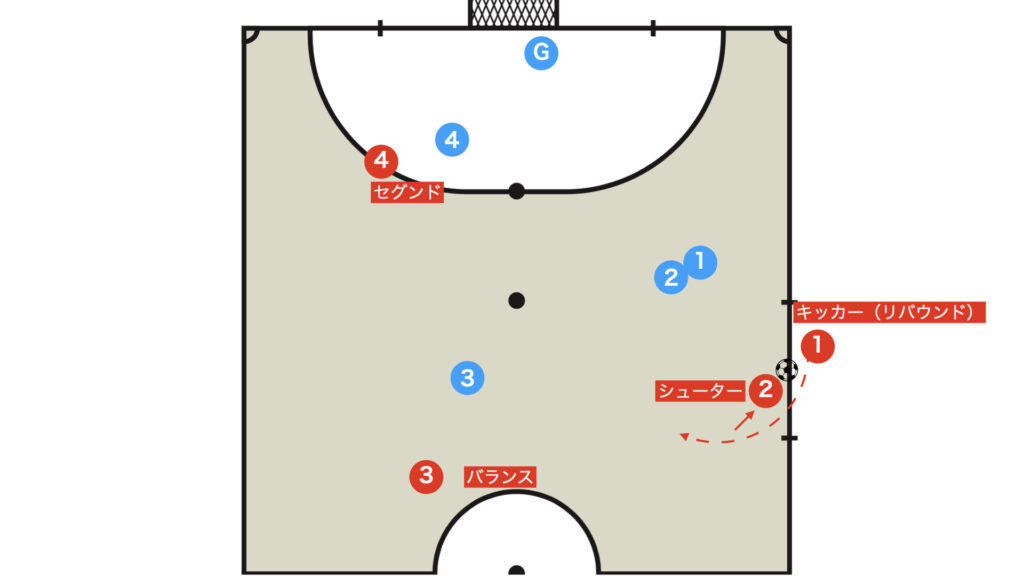
When shooting, keep in mind the finishing triangle (a formation consisting of a triangle plus one, formed by the shooter, segundo, and the rebound/balance player).
It is crucial that each player remains aware of the role they are responsible for at all times.
This role varies depending on the attacking pattern.
Pattern 1: Chon then Don
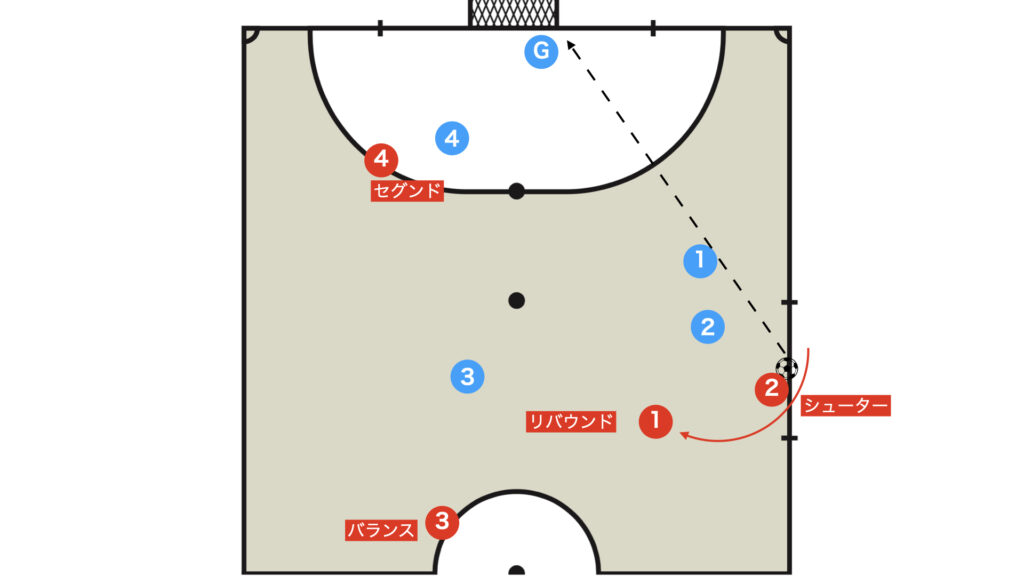
The primary objective of Chondon is to aim for the goal with a direct shot.
The Target is the Near Side
When choosing to shoot in Chondon, the basic principle is to target the near side, which offers the shortest distance to the goal.
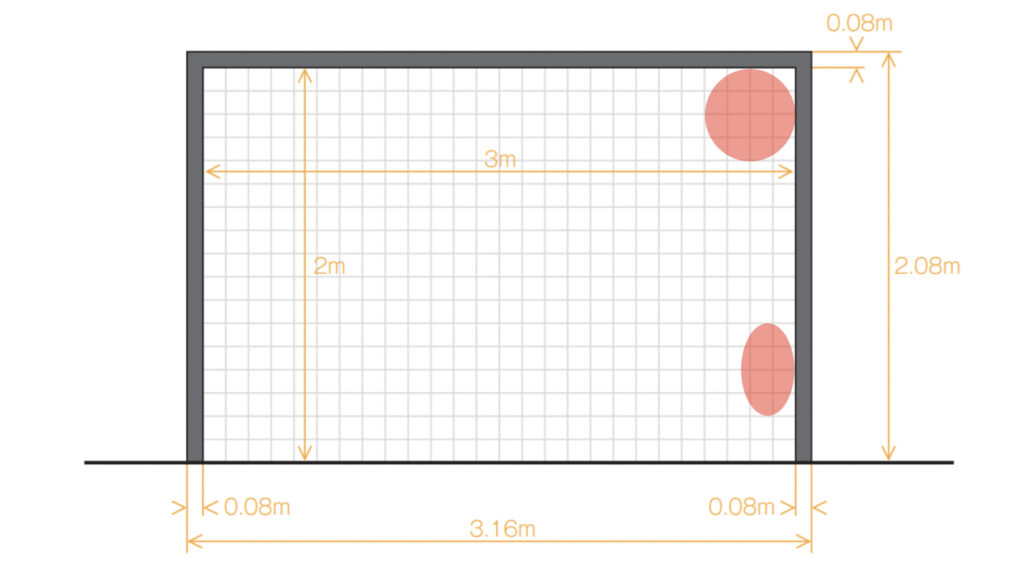
The easiest shooting lanes are the slightly lofted one that the near Goleiro cannot reach with an extended leg, and the upper corner.
Since a course that is slightly off the ground might be cut by the wall extending a leg, aiming for the near upper corner makes it easier to overcome the wall (a high shot passes at the height of the wall’s crotch, making it difficult for defenders to intercept or avoid).
Pattern 2: Utilizing the Segundo and Pivo
When the Wall Breaks and a Course to the Segundo Opens
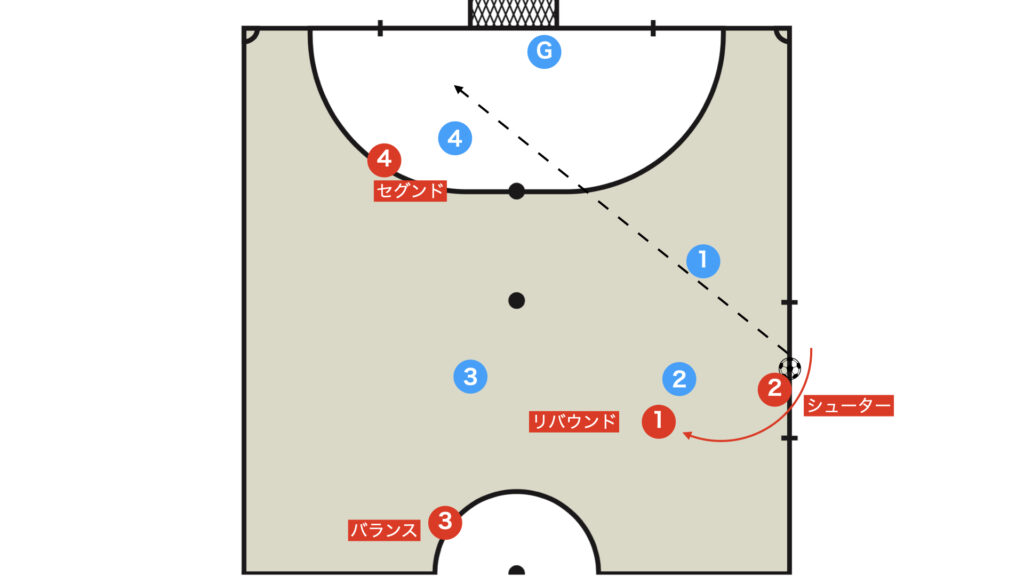
In this video, due to the high kick-in position, the opposing team forms only one wall (although in reality, having two—even if barely—is preferable).
When the Near Wall (Stone) Steps Forward and Engages
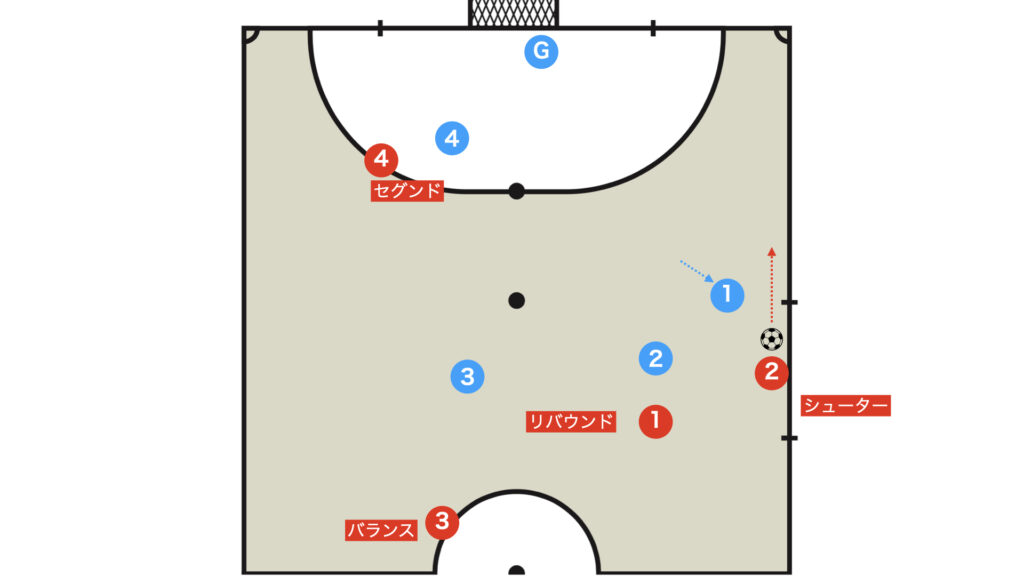
Depending on the team, in anticipation of Chondon, either the near player or both the near and far players may step forward.
In such cases, using a shot (or kick) feint to move the ball one touch ahead and unmark the defender is effective.

As before, while targeting the near or the segundo depending on the situation is viable, if a pivo is positioned as the segundo, an attack utilizing the pivo is also effective.
Many teams deliberately position the pivo as the segundo with this strategy in mind.
Pattern 3: Kicker (Rebound) → Shooter (Rebound)
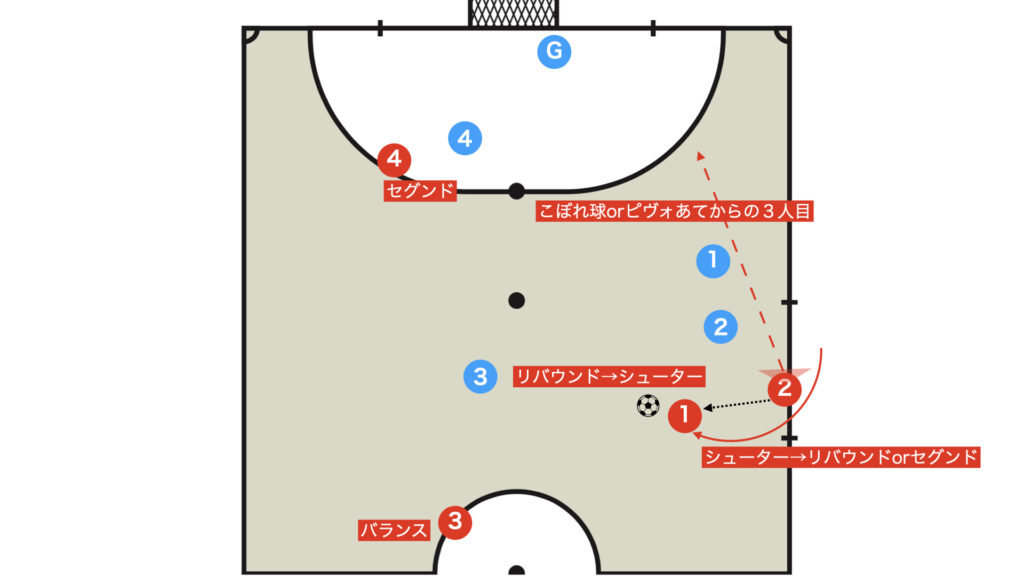
At this moment, be careful not to pass with a heel (pisada) directly behind you (180°); instead, pass with a heel so that the ball travels perpendicular (90°) to the touchline, making it easier for the receiver to cut in.
Pattern 4: Balance → Shooter
When the Balance Player is Free
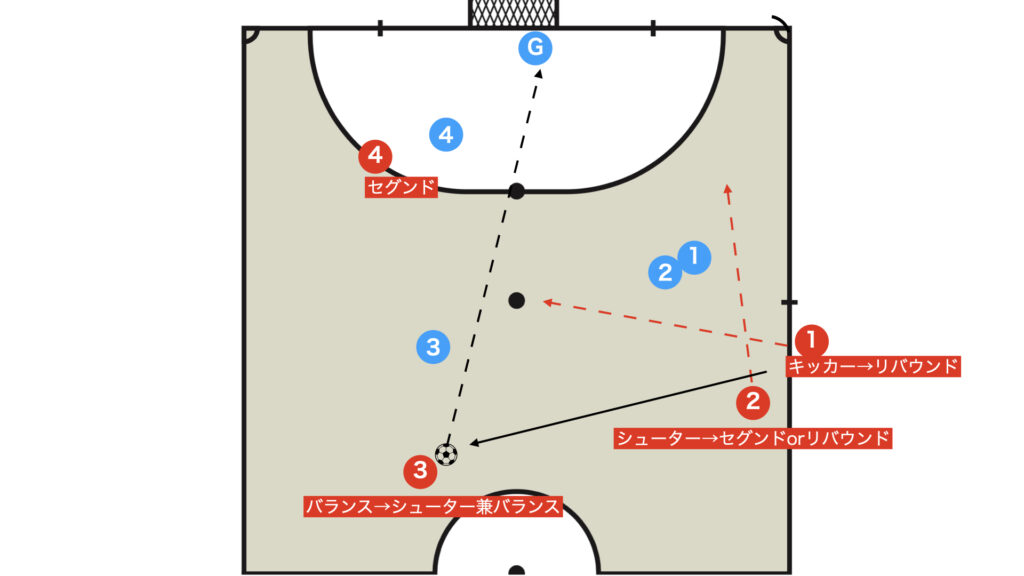
When a player maintaining balance at the back is free, it is effective to deliver a ground pass and take a mid-range shot.
Especially during a high kick-in, the angle makes shooting easier.
When there is absolutely no option for a pass, using the Goleiro is also a viable choice.
When the Opponent is Tightly Marking the Balance Player
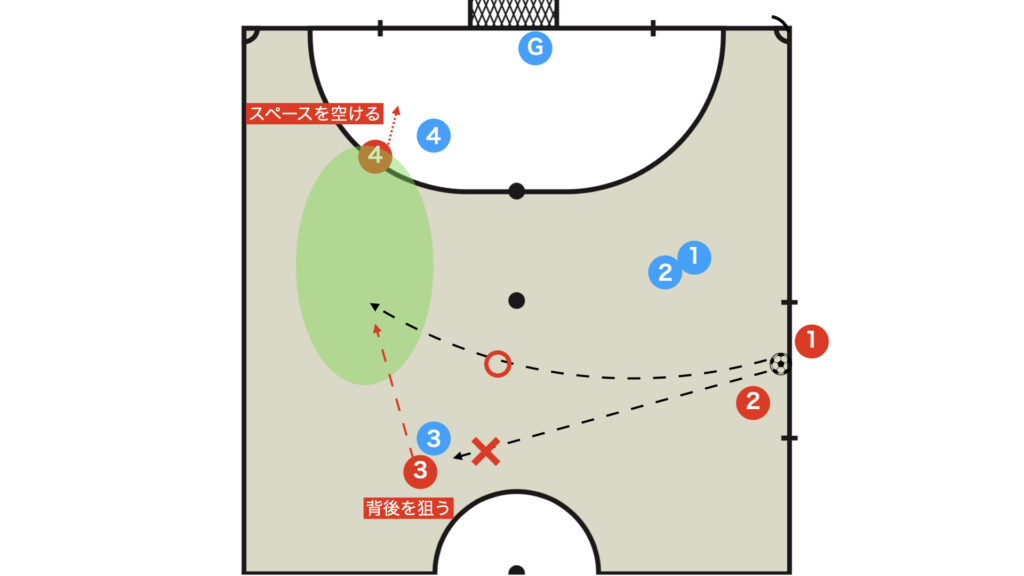
When a player maintaining balance is being closely marked one-on-one, targeting their back is an effective strategy.
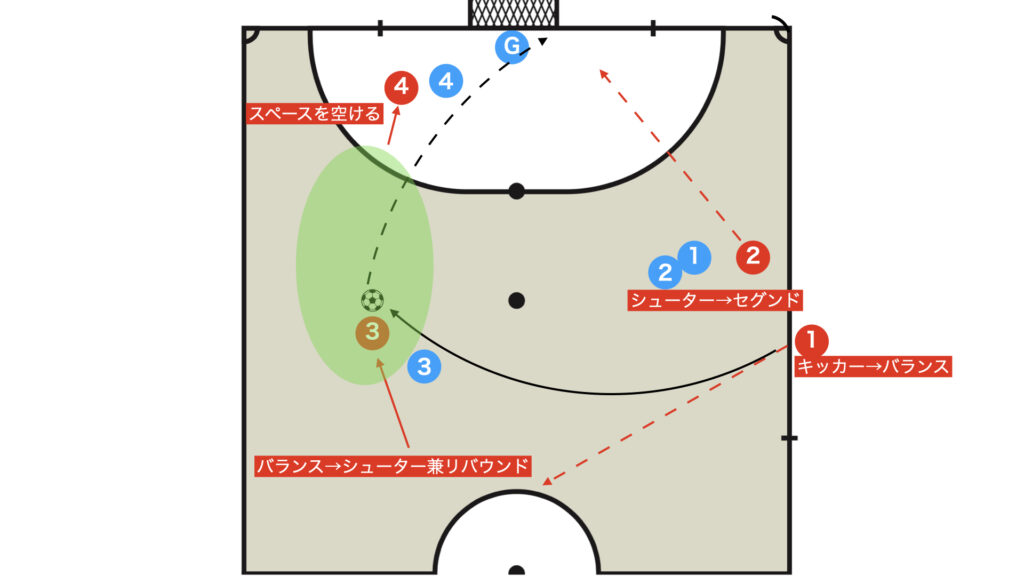
Since a ground pass risks being intercepted and leading to a counter, the basic approach is to aim for a volley shot from a loop pass.
If the ground pass is reliably accurate, it is acceptable to use it.
Depending on the situation, it is best to decide whether to aim for the back or receive at the feet; however, since proficiency in shooting with both feet is required, the difficulty is high. It is advisable to consider the dominant foot of the balance player when choosing which option to pursue.
Summary
Chondon is not merely about executing a chon followed by a don; it offers a variety of options.
A good set-piece is one that, even when the opponent anticipates a particular play, can cleverly switch to another option.
Rather than indiscriminately increasing the number of prearranged plays, it is recommended to first focus solely on Chondon and enhance its quality.
By improving the quality of Chondon, tricky set-plays that allow the kicker and shooter to break free become more effective, so once a certain level of proficiency is reached, why not consider introducing new set-plays?
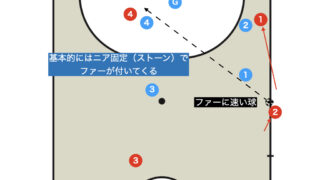
Thank you very much for reading this article to the end.
If you found this article useful, please consider sharing it using the social media share buttons above.
We regularly share valuable insights on futsal tactics on Twitter, so if you haven’t followed us yet, we’d appreciate your support!
We are committed to raising the level of futsal in Japan by sharing high-quality information through discussions with individuals who have coaching experience in the F.League and overseas.
If you have any questions or notice any mistakes, feel free to leave a comment below.
We update our articles regularly, so if you’d like to keep reading, please bookmark our site or search for “FutTech”!

